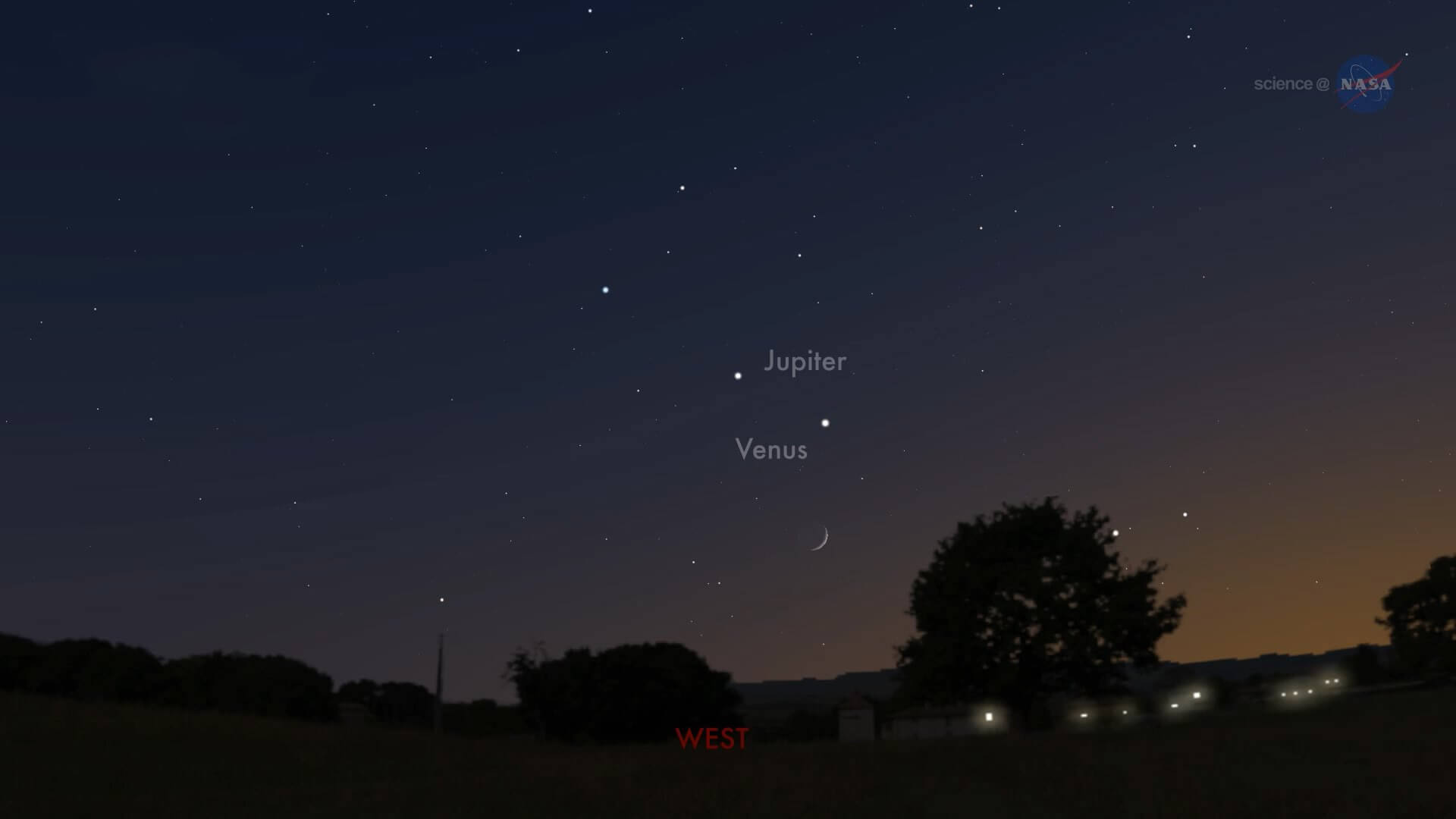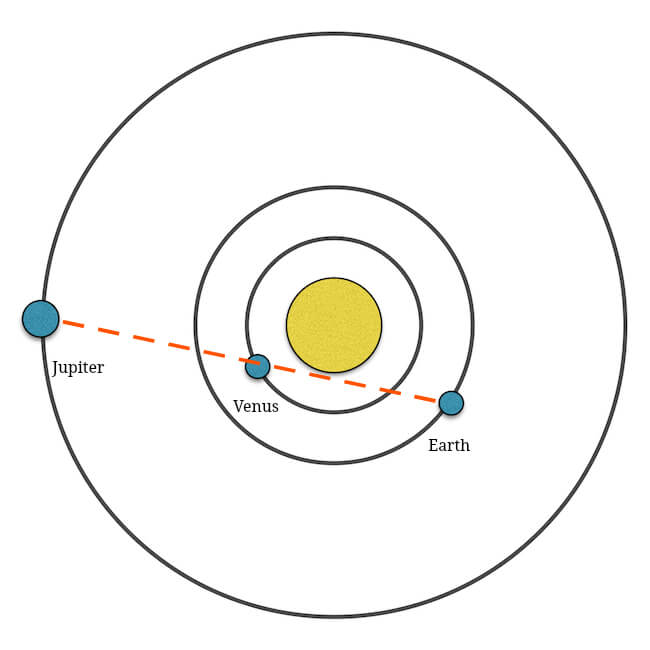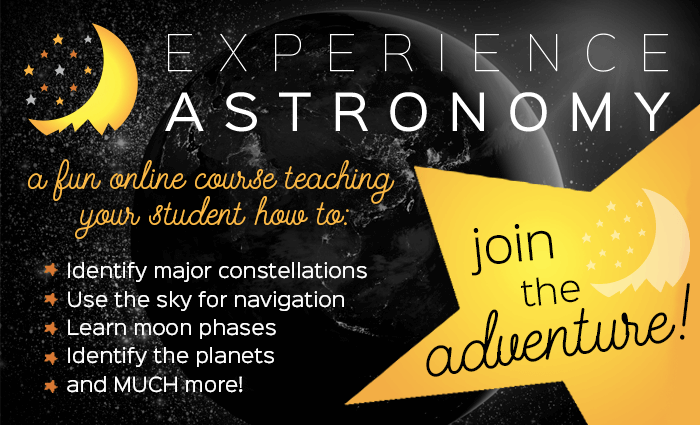
What is a planetary conjunction? A planetary conjunction is when two or more planets converge very close together in the sky.
What causes a planetary conjunction? During a planetary conjunction, the planets are not actually close to each other in space. It merely means the Earth (and thus our eyes) is in a position where two or more planets are in the same line of sight.
Below you’ll see a visual description of the upcoming planetary conjunction on August 27.

Why go look for this conjunction? Venus and Jupiter are the two brightest planets in the sky—in fact, they are the 3rd and 4th brightest objects in the sky (behind the sun and the moon). They will be so close you can look at them at the same time through binoculars or a telescope. You may not be able to see two objects with the naked eye. These really close conjunctions are sometimes nicknamed “epoch conjunctions.”
Planetary Conjunction Activity
Have your child start going outside every evening between now and August 27th. If you miss a night or two or three, no big deal. If its too cloudy and you can’t see anything several nights, no big deal. Just go out again the next evening and try again.
When to go out:
- Go to TimeAndDate.com/sun. Enter your city. It will give you suggestions of big cities nearby. Just choose the closest one.
- Scroll down and look at the chart they give you. You’ll see a column for sunset.
- On a sheet of paper, write down all the sunset times between now a the 27th.
- Add 20 minutes to each of those times. Those are the times you need to go outside each day. You will need to stay outside for at least 15-20 minutes so your eyes can adjust to the light.
Where to view the planets:
Pick the same location in your yard that has the best view of the western horizon. Venus and Jupiter are very bright, so you if there are no clouds, you should see them easily. They will be the two brightest objects in the sky in the west after the sun sets.
If you can’t see Venus, your skyline may not be low enough where you are standing. Consider another location.
What to do:
Have your child take a ruler and extend their arm as far as they can to measure the apparent distance between the planets. Have them write down the distance between the planets every day.
As an optional activity, have your child draw what they see in the sky. They can draw the skyline right below these planets (trees, buildings, or other objects on the horizon), then have them draw where the two dots are in the sky.
By August 27th, the planets will be right next to each other.
This activity teaches your kids that this movement is a result of the Earth’s motion, Venus’ motion, and Jupiter’s motion around the sun.
Learn More About the Planets!
If your child is 12 years old or older, they will love Experience Astronomy, a full-school-year online course. Not only do students learn about the planets and other objects in our solar system, but they also learn how to read the sky like a map, identifying major constellations, moon phases, and all the various motions of the sky above.

